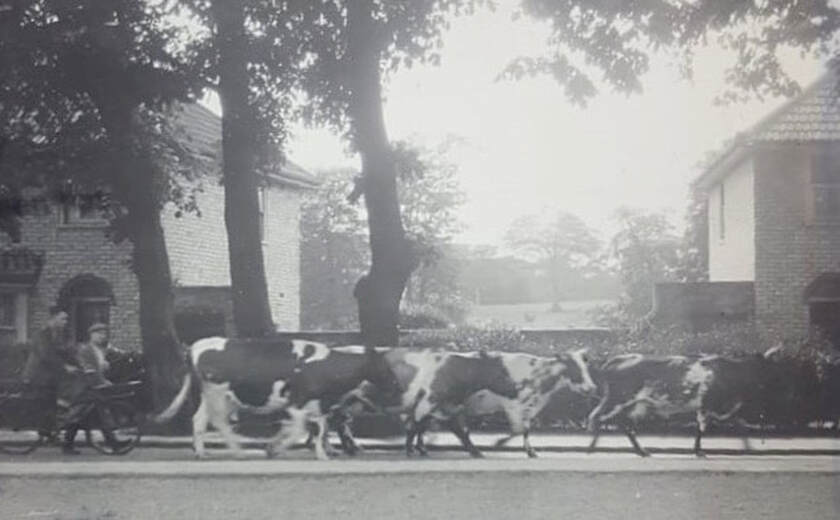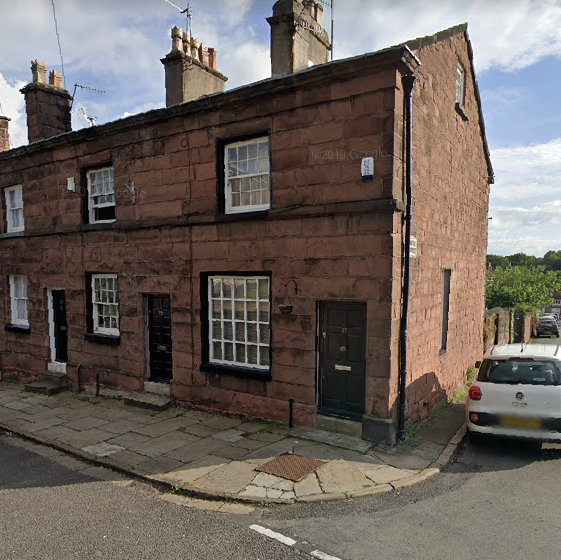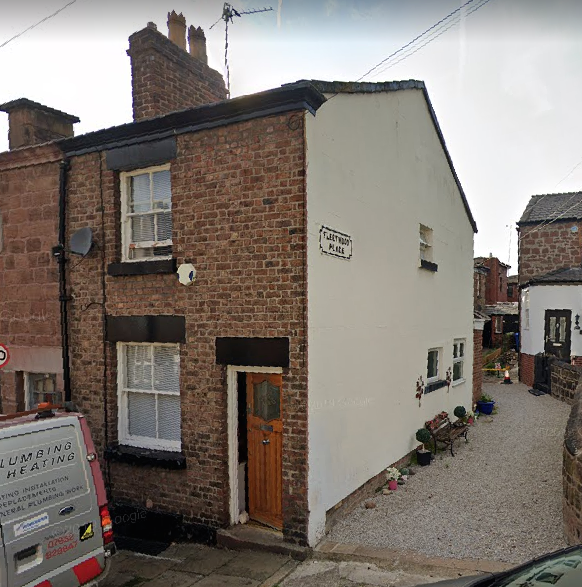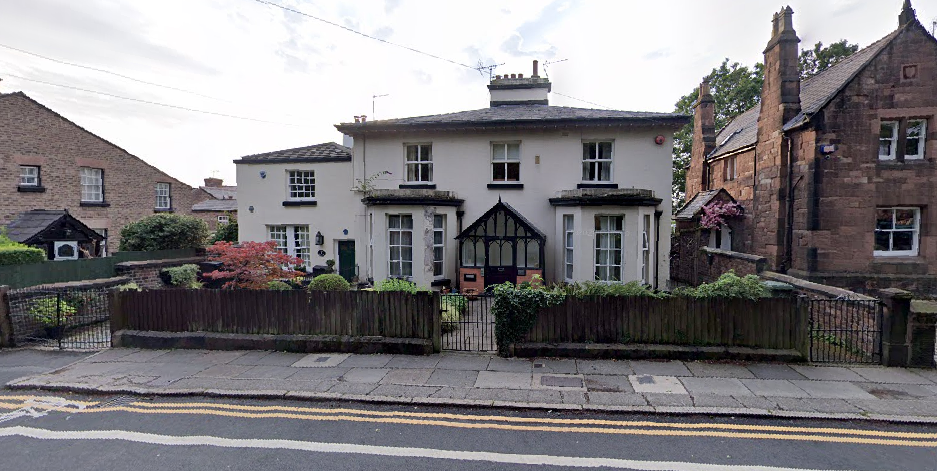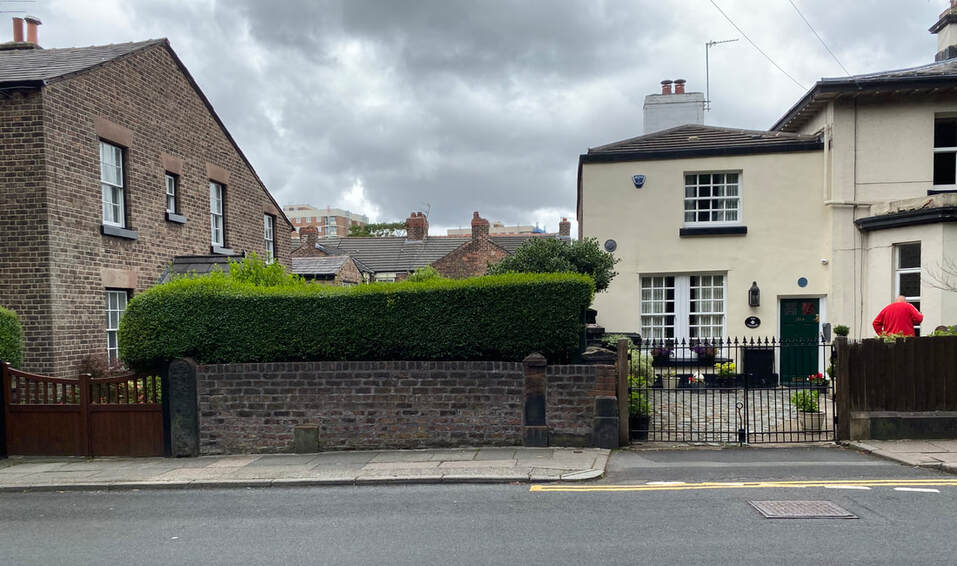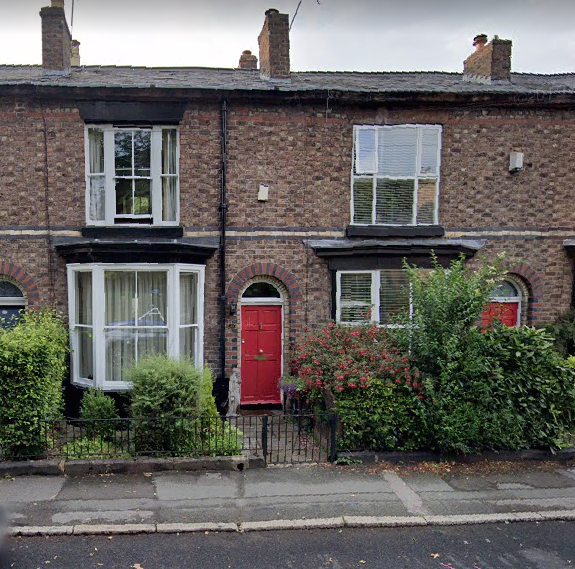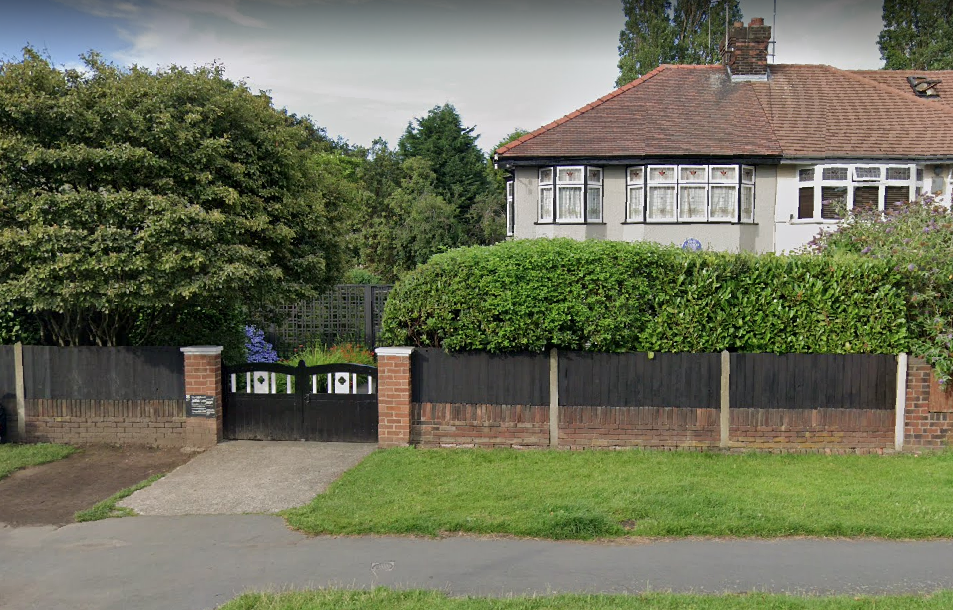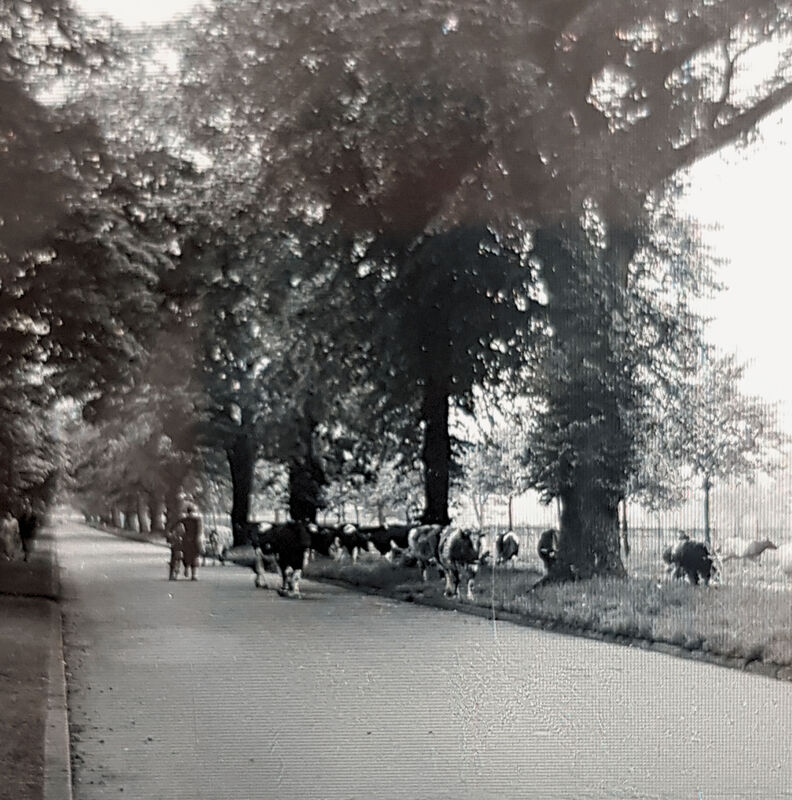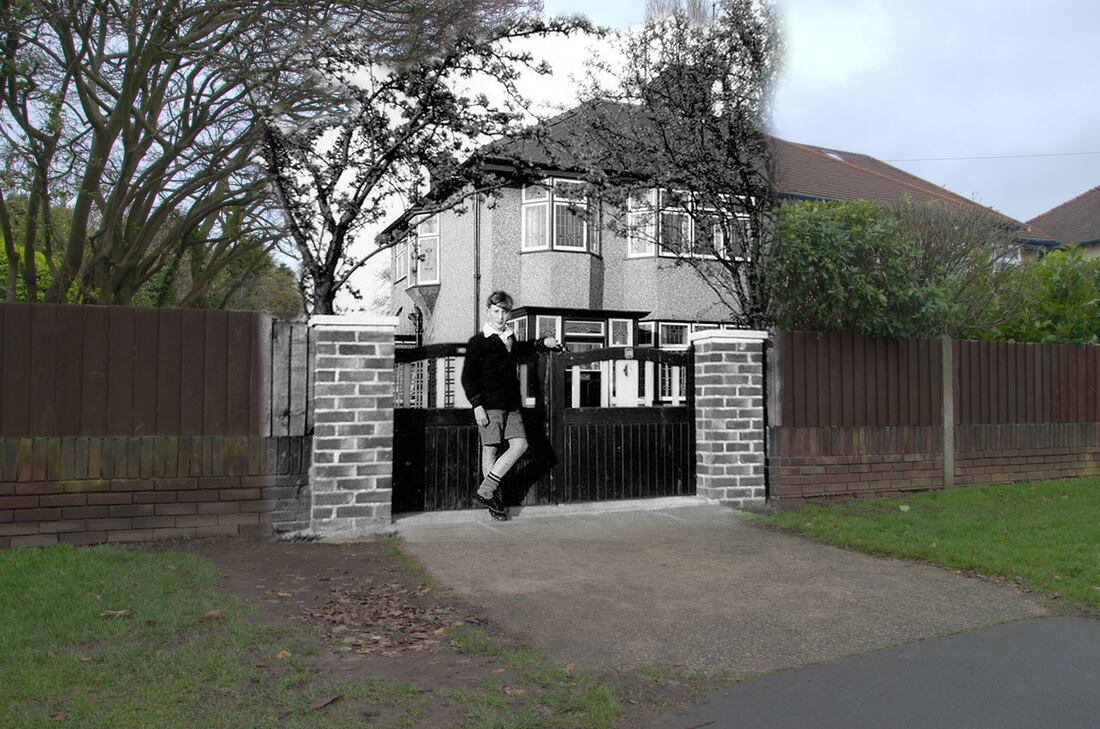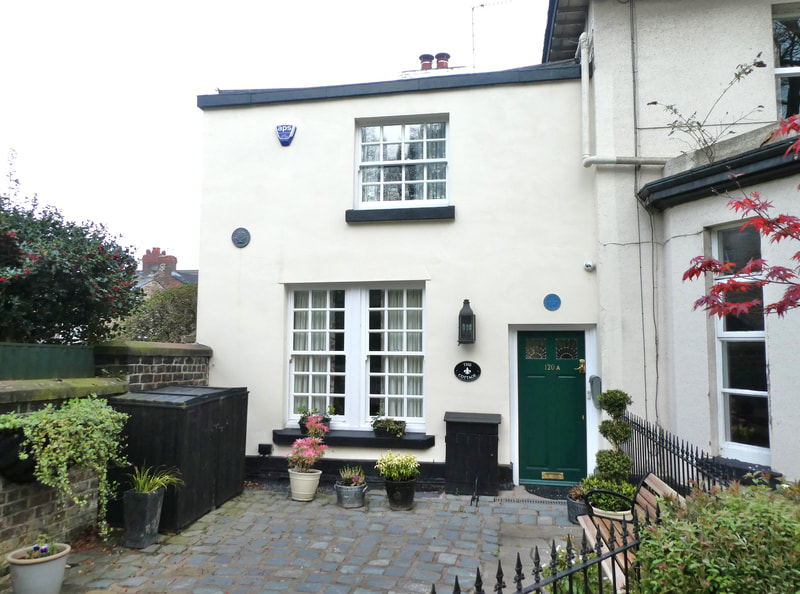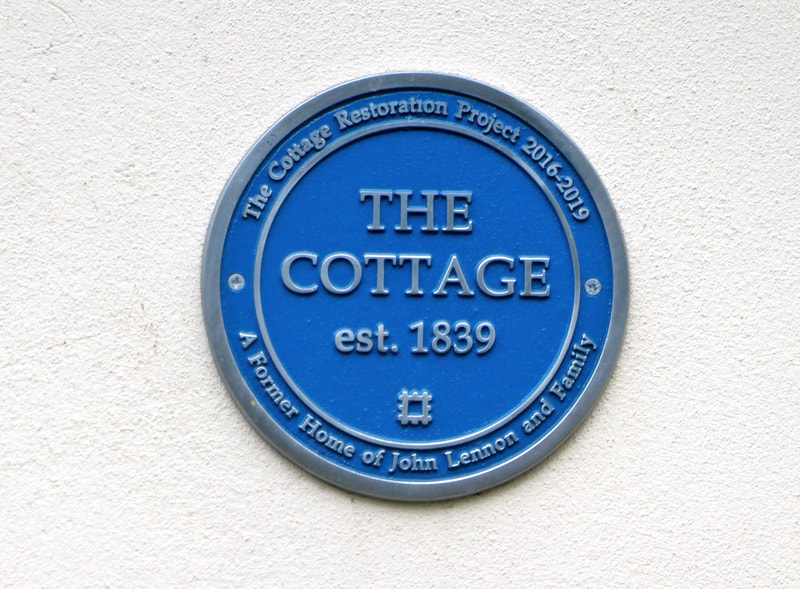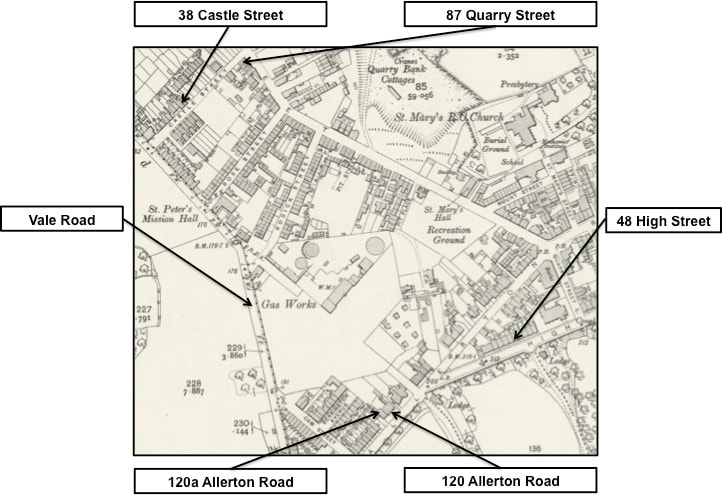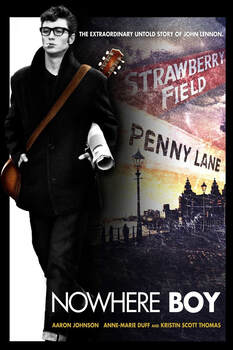
On more than one occasion the Q&A session at the end of my talks has generated a question or statement about John Lennon’s cowkeeping connection. This usually takes the form of “Did you know that John Lennon’s uncle was a cowkeeper?’ My stock answer to this question has been something along the lines of “Yes, I believe he was.” I then move swiftly on to the next question.
More recently, in accordance with Lockdown requirements, all my talks were cancelled and I had to find other things to keep me occupied. One such thing was finally getting my money’s worth out of the family’s Netflix subscription! Thus, one afternoon I found myself watching the 2009 film Nowhere Boy, a biographical drama about John Lennon’s adolescent years, spent in the south of Liverpool. The film was of interest to me for a number of reasons, the most obvious one being that I grew up on all things Beatles – my siblings and I even ate off The Beatles plates and drank out of The Beatles mugs. But, also because my wife and I were both born and bred in this part of Liverpool and we met through attending the same school as John Lennon (although, by then, Quarry Bank had become a comprehensive school).
As satisfying as this nostalgia trip was, the film also served to prompt my curiosity about the Lennon family’s cowkeeping connection. So, with time on my hands, I decided to research the matter the same way I had researched the cowkeeping histories of other families. That way, once I resumed giving talks, I would be able to provide a fuller answer if the question ever came up again — and be able to refer people to my website if they were interested in learning more. So, what was John Lennon’s cowkeeping connection?
More recently, in accordance with Lockdown requirements, all my talks were cancelled and I had to find other things to keep me occupied. One such thing was finally getting my money’s worth out of the family’s Netflix subscription! Thus, one afternoon I found myself watching the 2009 film Nowhere Boy, a biographical drama about John Lennon’s adolescent years, spent in the south of Liverpool. The film was of interest to me for a number of reasons, the most obvious one being that I grew up on all things Beatles – my siblings and I even ate off The Beatles plates and drank out of The Beatles mugs. But, also because my wife and I were both born and bred in this part of Liverpool and we met through attending the same school as John Lennon (although, by then, Quarry Bank had become a comprehensive school).
As satisfying as this nostalgia trip was, the film also served to prompt my curiosity about the Lennon family’s cowkeeping connection. So, with time on my hands, I decided to research the matter the same way I had researched the cowkeeping histories of other families. That way, once I resumed giving talks, I would be able to provide a fuller answer if the question ever came up again — and be able to refer people to my website if they were interested in learning more. So, what was John Lennon’s cowkeeping connection?
the cowkeeping connection
John Winston Lennon was born on 9th October 1940 at Liverpool Maternity Hospital, to Julia (nee Stanley) and Alfred Lennon. As depicted in the film, John spent his early years living with his aunt Mimi (Mary Elizabeth, nee Stanley, Julia’s sister) and her husband, George Toogood Smith, at their home, Mendips, 251 Menlove Avenue; the couple were John’s legal guardians. George was a Milkman who came from a family of dairy farmers. He used to deliver milk to Woolton Convalescent Hospital, where Mimi worked as a resident trainee nurse.
The Smith Family — Dairying in Woolton
George Toogood Smith (1903-1955) was one of 7 children (who survived infancy) of Francis Smith (1868-1932) and Alice Garnett (1868-1949). But, it is possible to trace his family’s dairying history back to his great grandparents: George Toogood (1805-1846) and Ann Rushton (1812-1893).
George and Ann married on 17th May 1838 at St Peter’s Church, Woolton. George’s occupation is given as ‘Innkeeper’. They had two children: George Toogood (b. 1839) and Mary Ellen Toogood (b. 1841). In the 1841 census George is recorded as being an ‘Innkeeper’ in Delf Lane (later, became Quarry Street), Woolton. Sadly, in 1846, George died prematurely at the age of 41; he was buried at St Peter’s Church.
George and Ann married on 17th May 1838 at St Peter’s Church, Woolton. George’s occupation is given as ‘Innkeeper’. They had two children: George Toogood (b. 1839) and Mary Ellen Toogood (b. 1841). In the 1841 census George is recorded as being an ‘Innkeeper’ in Delf Lane (later, became Quarry Street), Woolton. Sadly, in 1846, George died prematurely at the age of 41; he was buried at St Peter’s Church.
Ann then married James Benson, a ‘Licensed Victualler’ and had two children with him: Sarah Benson (b. 1851) and James Benson (b. 1853). The 1851 census has the family (including Mary Ellen Toogood) living at 3 and 4 Quarry Street, Woolton. When James died prematurely, in 1859, although the licence passed to Ann's son, George Toogood, the establishment became known as "Mrs Benson's". By the time of the next census, in 1861, Ann and her son (who was a ‘Coachbuilder/Beer Seller’) were recorded as living at the ‘Beer House’ in Quarry Street. Ann’s occupation is given as ‘Housekeeper’, but her marital status is still ‘Married’ — this, despite her being widowed. Also living there were the two half-sisters: Mary Ellen Toogood and Sarah Benson. During the mid-1860s the licence passed to Mary Ellen Toogood and the establishment became known as "Mary Ellen's". For some reason Ann’s marital status is still given as ‘Married’ in the 1871 census. But by then she had become the family’s first ‘Cowkeeper’, residing in one of a handful of properties on VALE ROAD (overlooking Fletcher’s Farm). Living with her were her two children from her second marriage, Sarah and James Benson.
In the meantime, Ann’s daughter from her first marriage, Mary Ellen Toogood, had married Francis Smith, in January 1867. Francis was the son of stonemason Francis Smith (1801-1877) and Eunice Lowe (1801-1879), who lived at Woolton Hall Lodge. On 13th January 1868, Mary Ellen gave birth to twins, Francis and Frances, a boy and a girl. Mary Ellen then experienced a double tragedy: her husband died on 18th September 1869, followed a year later by her daughter, Frances. This new situation is reflected in the 1871 census, where ‘Widow’ Mary Ellen is recorded as a ‘Beer House Keeper’ at 87 QUARRY STREET (on the corner of Castle Street), along with her three-year-old son, Francis. Mary Ellen was still making a living as a ‘Beer Seller’ for the 1881 census. Living with her at 87 Quarry Street were her thirteen-year-old son, Francis, and her widowed mother, Ann Benson. Ann’s occupation is still given as ‘Cowkeeper’. This situation remained unchanged for the 1891 census, though by then Francis was following in his grandmother’s footsteps and had become a ‘Cowman’.
When Ann died, in 1893, Mary Ellen took on the running of the dairy and is recorded in the 1900 directory as a ‘Cowkeeper’ at 87 QUARRY STREET. She became an active member of the Liverpool Cowkeepers’ Association and won many prizes showing her cows at the Association’s annual Christmas Show. A number of these successes were reported in local newspapers:
1897
Cows in calf or milk (Heavyweights) — Second Prize to Mrs M E Smith, Quarry Street, Woolton
Irish Dairy Cows — First Prize to Mrs M E Smith
1899
Fat cow not exceeding 14½ cwt. — Fifth Prize to Mrs E Smith, Quarry Street, Woolton
Irish Cow in calf or milk — Second Prize to Mrs Smith, Woolton
1900
Fat Cow 14 ½ cwt. and upwards — Second Prize to Mrs M Smith, Quarry Street, Woolton
Irish Cows in Calf or Milk — Second Prize to Mrs M Smith, Woolton
1906
Fat Cow not exceeding 14½ cwt. — Fourth Prize to Mrs M E Smith, 87 Quarry Street, Woolton
Best Dairy Cow owned by a member of the Association — Third Prize to Mrs M E Smith
Special Prize (awarded by Mr W S H Bevin) — Mrs M E Smith
1909
Cows calved, over 11 cwt and Cows in calf over 12 cwt. — Fourth Prize to Mrs Smith
1897
Cows in calf or milk (Heavyweights) — Second Prize to Mrs M E Smith, Quarry Street, Woolton
Irish Dairy Cows — First Prize to Mrs M E Smith
1899
Fat cow not exceeding 14½ cwt. — Fifth Prize to Mrs E Smith, Quarry Street, Woolton
Irish Cow in calf or milk — Second Prize to Mrs Smith, Woolton
1900
Fat Cow 14 ½ cwt. and upwards — Second Prize to Mrs M Smith, Quarry Street, Woolton
Irish Cows in Calf or Milk — Second Prize to Mrs M Smith, Woolton
1906
Fat Cow not exceeding 14½ cwt. — Fourth Prize to Mrs M E Smith, 87 Quarry Street, Woolton
Best Dairy Cow owned by a member of the Association — Third Prize to Mrs M E Smith
Special Prize (awarded by Mr W S H Bevin) — Mrs M E Smith
1909
Cows calved, over 11 cwt and Cows in calf over 12 cwt. — Fourth Prize to Mrs Smith
Mary Ellen remained at Quarry Street for the next two censuses and is recorded as a ‘Cowkeeper’ (1901) and a ‘Dairy Keeper’ (1911), living with just a servant. It is thought she died in 1920.
Mary Ellen’s son, Francis Smith (1868-1932), married Alice Garrett (1868-1949) at St Peter’s Church on 29th November 1891. Francis gives his occupation as that of ‘Cowman’. They had seven children who survived infancy: Mary (b. 1892), Eleanor (b. 1894), Francis/Frank (b. 1896), Robert (b. 1898), Alice (b. 1900), George Toogood (b. 1903) and Alfred John (b. 1906). The family first appear on the census records in 1901, living at 38 CASTLE STREET, Woolton (located on the corner of Fleetwood Place). Francis’s occupation is given as ‘Cowkeeper’. However, the 1903 directory has them listed at 120 ALLERTON ROAD and the family are subsequently recorded there for the 1911 census; Francis’s occupation continues to be that of ‘Cowkeeper’.
Mary Ellen’s son, Francis Smith (1868-1932), married Alice Garrett (1868-1949) at St Peter’s Church on 29th November 1891. Francis gives his occupation as that of ‘Cowman’. They had seven children who survived infancy: Mary (b. 1892), Eleanor (b. 1894), Francis/Frank (b. 1896), Robert (b. 1898), Alice (b. 1900), George Toogood (b. 1903) and Alfred John (b. 1906). The family first appear on the census records in 1901, living at 38 CASTLE STREET, Woolton (located on the corner of Fleetwood Place). Francis’s occupation is given as ‘Cowkeeper’. However, the 1903 directory has them listed at 120 ALLERTON ROAD and the family are subsequently recorded there for the 1911 census; Francis’s occupation continues to be that of ‘Cowkeeper’.
So, if there was a cowkeeper at 120 ALLERTON ROAD, where was he keeping his cows? Ron Brown’s analysis helps to throw some light on this. The 1893 OS map of the area shows that there was an access down the side of 120a Allerton Road that led to land and a collection of outbuildings to the rear of the property; one of these outbuildings appears to be the right size and shape to have been a shippon. Ron’s photograph of the Allerton Road frontage shows the old gateposts that mark the entrance to this access (now, bricked-up and topped with a hedge). The land and buildings to the rear of this stretch of Allerton Road became detached with the construction of Berrington Avenue. But a comparison of the respective OS maps from 1893 and 1907 strongly suggest that the shippon originally serving 120 Allerton Road was retained and was subsequently incorporated into a new dairy at 4 Berrington Avenue. This building is of particular interest to me as my first cousin three-times-removed, Thomas Spracklin Joy, operated the dairy at 4 Berrington Avenue in the early 1900s. This former shippon still stands today and has been converted for residential use, accessible from what is now the superstore car park.
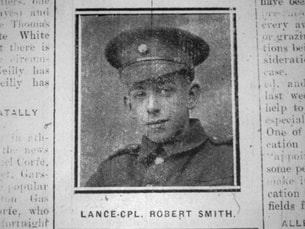 Lance Corporal Robert Smith. KIA 30 August 1918
Lance Corporal Robert Smith. KIA 30 August 1918
Francis’s two eldest sons, Richard and Frank, saw action in the First World War. Richard joined the King’s Liverpool Regiment and rose to the position of Lance Corporal in the 6th Battalion. At the age of nineteen he received the Military Medal for conspicuous gallantry when he rescued from the battlefield an officer and a fellow soldier who were both wounded. He also received a medal for being the best shot in his battalion. Sadly, he was Killed In Action in France/Flanders on 30th August 1918.
Frank served in the Royal Navy from 1915 until 1919. On 30th November 1918, he married Phoebe Sybil Burgess (1894-1938) at St Peter’s Church. Frank’s home address is given as 120 ALLERTON ROAD, whilst Phoebe was living at 8 Cam Street. After the war, Frank returned to continue working for his father as a ‘Cowkeeper’.
Frank served in the Royal Navy from 1915 until 1919. On 30th November 1918, he married Phoebe Sybil Burgess (1894-1938) at St Peter’s Church. Frank’s home address is given as 120 ALLERTON ROAD, whilst Phoebe was living at 8 Cam Street. After the war, Frank returned to continue working for his father as a ‘Cowkeeper’.
In 1932, Francis died under rather mysterious circumstances as reported in the Garston & Woolton Weekly News on 10th June 1932 under the heading: A Mystery Solved, Body Found in Speke Pond, Woolton Cowkeeper's Death.
“A mystery of two months’ duration was solved last Saturday, when the body of a man, found floating on a pit in Dodds Lane, Speke, was identified as that of Francis Smith (64), cowkeeper, 120 Allerton Road, Woolton, who was reported as missing to the police on April 4th.
The inquest was held on Tuesday at the Liverpool Coroner’s Court, when the City Coroner (Mr G Cecil Mort) returned a verdict that Francis Smith took his own life by drowning whilst of unsound mind.
Mrs Alice Smith, 120 Allerton Road, Woolton, said her husband was a cowkeeper, aged 64 years. He suffered from a gastric ulcer in November, and had haemorrhage, which was treated by Dr Robbes, of Woolton. He had since been in a poor state of health, and in February developed a mental condition. About 6am on the 4th of April he said he was feeling fit and would go to work in the shippon. She saw him from the window of the bedroom board the 6.30am tramcar to Liverpool. This was unusual, so she sent her son on the next tramcar. Her son never saw him, and he was reported missing to the police. She had heard on Saturday of the finding of the body, and her son had since seen and identified the body as that of her husband
Frank Smith, cowkeeper, 48 High Street, Woolton, said that, beyond his health, his father had nothing to worry about. He went to the shippon at 6am on April 4th. Deceased had not arrived there, and they did not expect him till 8am. He did not see him again, and on Saturday heard of the finding of the body, which he identified by his clothing and by the initials on his shirt.
Police Constable 117F (Harry Arthur Pierce) said that in response to a telephone message he went on Saturday to a pit in a field in Dodds Lane, Speke, where he saw the body floating. With assistance he recovered the body, and identified him as the deceased, whom he knew personally, and whom he knew had been reported missing. Clasped in his right hand was a closed penknife, and there were several stabs inflicted with the knife on the back of his hand. He removed the body to the Princes Dock mortuary.
Dr John Unsworth said that at the Coroner’s request he made an external examination of the body. There were several punctured wounds on the back of the right hand and on the right wrist. They had nothing to do with the death, which was due to drowning. The body was decomposed.
A verdict was returned as stated.”
“A mystery of two months’ duration was solved last Saturday, when the body of a man, found floating on a pit in Dodds Lane, Speke, was identified as that of Francis Smith (64), cowkeeper, 120 Allerton Road, Woolton, who was reported as missing to the police on April 4th.
The inquest was held on Tuesday at the Liverpool Coroner’s Court, when the City Coroner (Mr G Cecil Mort) returned a verdict that Francis Smith took his own life by drowning whilst of unsound mind.
Mrs Alice Smith, 120 Allerton Road, Woolton, said her husband was a cowkeeper, aged 64 years. He suffered from a gastric ulcer in November, and had haemorrhage, which was treated by Dr Robbes, of Woolton. He had since been in a poor state of health, and in February developed a mental condition. About 6am on the 4th of April he said he was feeling fit and would go to work in the shippon. She saw him from the window of the bedroom board the 6.30am tramcar to Liverpool. This was unusual, so she sent her son on the next tramcar. Her son never saw him, and he was reported missing to the police. She had heard on Saturday of the finding of the body, and her son had since seen and identified the body as that of her husband
Frank Smith, cowkeeper, 48 High Street, Woolton, said that, beyond his health, his father had nothing to worry about. He went to the shippon at 6am on April 4th. Deceased had not arrived there, and they did not expect him till 8am. He did not see him again, and on Saturday heard of the finding of the body, which he identified by his clothing and by the initials on his shirt.
Police Constable 117F (Harry Arthur Pierce) said that in response to a telephone message he went on Saturday to a pit in a field in Dodds Lane, Speke, where he saw the body floating. With assistance he recovered the body, and identified him as the deceased, whom he knew personally, and whom he knew had been reported missing. Clasped in his right hand was a closed penknife, and there were several stabs inflicted with the knife on the back of his hand. He removed the body to the Princes Dock mortuary.
Dr John Unsworth said that at the Coroner’s request he made an external examination of the body. There were several punctured wounds on the back of the right hand and on the right wrist. They had nothing to do with the death, which was due to drowning. The body was decomposed.
A verdict was returned as stated.”
The Probate record for Francis Smith states that he was last seen alive on 4th April but that his body was discovered two months later, on 4th June, in a ditch in Speke. Probate was granted to: Thomas Chapman, Cattle Dealer; William McKenzie, Book Keeper; and, Frank Smith, Cowkeeper. Frank succeeded his father in running the family’s dairy business, but four years later faced further heartache when his wife, Phoebe, died in 1936.
For the 1939 Register, the Smith family was ensconced at 48 HIGH STREET — a mid-terrace property located just a couple of hundred yards away from the house and cottage at 120 ALLERTON ROAD. The latter was recorded in the Register as being a ‘Lock Up Shop’ with no one residing there. The family at 48 High Street were recorded in the Register as follows:
Alice Smith b. 01/05/1868 Unpaid Domestic Widow
Frank Smith b. 11/09/1896 Dairy Farmer (Heavy Work) Widower
George T Smith b. 13/03/1903 Dairy Farmer (Heavy Work) Single
Alfred J Smith b. 28/08/1906 School Teacher Single
Also in 1939, on 15th August, George Toogood Smith married Mary Elizabeth (Mimi) Stanley. The John Lennon connection affords George his own page on Wikipedia, which describes his life in summary. He operated his family’s two farms and a shop with his brother, Frank. He delivered milk in the Woolton area with a horse and cart and it was through delivering milk to Woolton Convalescent Hospital, where Mimi worked as a nurse, that he met his wife-to-be. They bought and moved into Mendips at 251 Menlove Avenue. The Smith family had to adapt their business when the British Government took their farmland for ‘war work’. George was called up for military service but was discharged three years later and subsequently worked in an aircraft factory in Speke. At the end of the war he left the milk trade and started a small bookmaker’s business.
Also in 1939, on 15th August, George Toogood Smith married Mary Elizabeth (Mimi) Stanley. The John Lennon connection affords George his own page on Wikipedia, which describes his life in summary. He operated his family’s two farms and a shop with his brother, Frank. He delivered milk in the Woolton area with a horse and cart and it was through delivering milk to Woolton Convalescent Hospital, where Mimi worked as a nurse, that he met his wife-to-be. They bought and moved into Mendips at 251 Menlove Avenue. The Smith family had to adapt their business when the British Government took their farmland for ‘war work’. George was called up for military service but was discharged three years later and subsequently worked in an aircraft factory in Speke. At the end of the war he left the milk trade and started a small bookmaker’s business.
Between 1942-43, Mimi’s sister, Julia, lived at THE DAIRY COTTAGE, 120a ALLERTON ROAD, along with her young son, John Lennon; the property was still owned by the Smith family. It was not long after this that Mimi and George became John’s legal guardians. John was living with them at Mendips when George died of a liver haemorrhage in 1955.
Between 1942-43, Mimi’s sister, Julia, lived at THE DAIRY COTTAGE, 120a ALLERTON ROAD, along with her young son, John Lennon; the property was still owned by the Smith family. It was not long after this that Mimi and George became John’s legal guardians. John was living with them at Mendips when George died of a liver haemorrhage in 1955.
Frank Smith married again, in 1942. His second wife was Lilian Emma Newton. The couple are recorded in the 1945 Electoral Register as living at 120 ALLERTON ROAD. Frank predeceased his younger brother, George, by some three months. Although this marked the end of the dairying tradition of the Smith family, it had lasted for a hundred years and had spanned four generations – IMAGINE that.
The Smith Family's Residences and Dairies in Woolton
